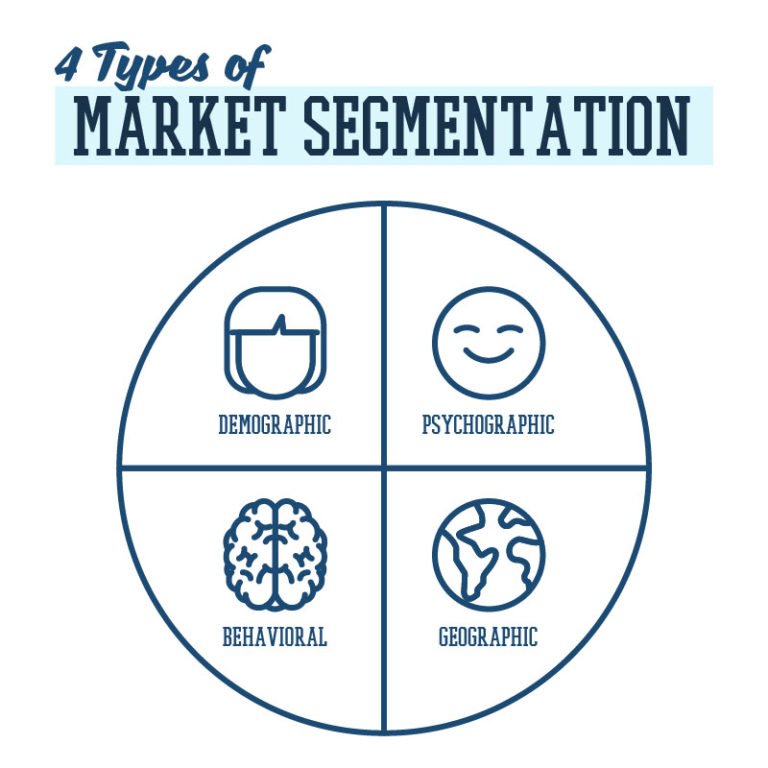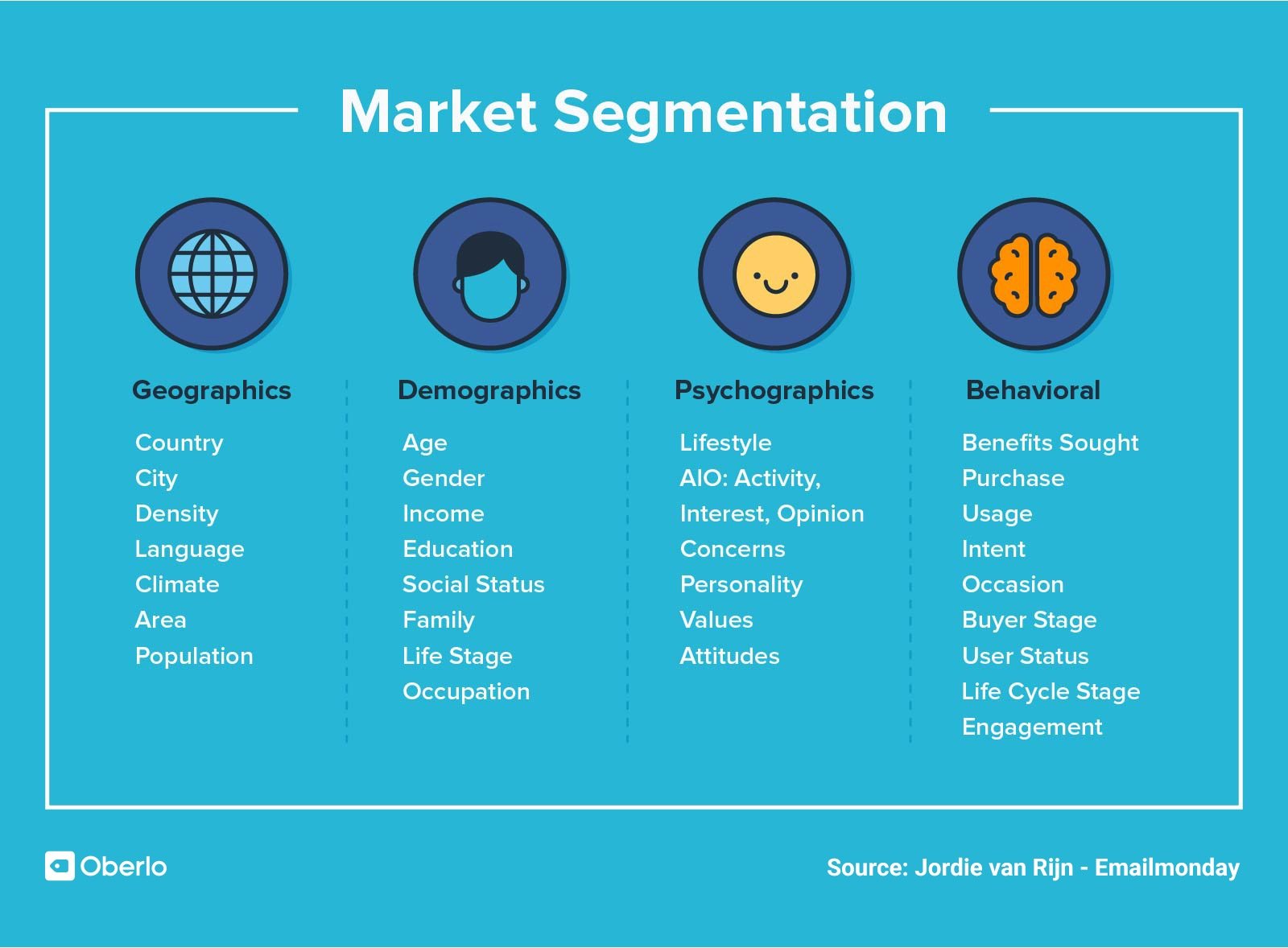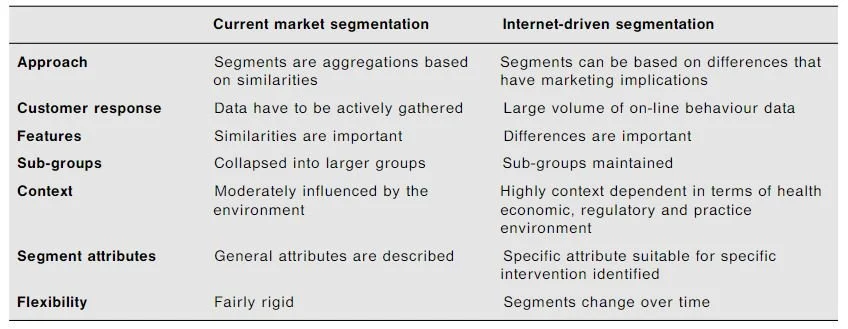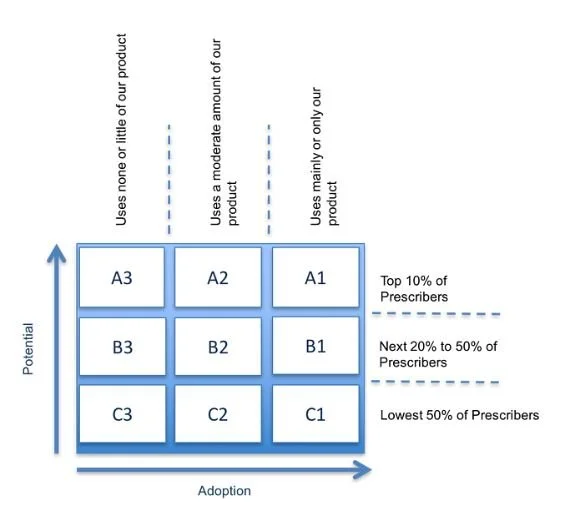Pharmaceutical Market Segmentation
Enhancing focus, boosting competitiveness and expanding into new markets: A look at pharmaceutical market segmentation.
Segmentation is a form of sorting: Arranging items in a systematic manner. Once items are sorted into distinct groups (segments) based on certain criterion, specific actions can then be taken based on that criterion.
Similarly, market segmentation involves the sorting of the market. The process entails dividing the market of potential customers and clients into segments based on characteristics, such as interests or needs, so that marketing messages, tactics and campaigns can become more targeted.
It’s widely considered that market segmentation, across the pharmaceutical sectors and beyond, fall into four segmentation categories: Demographic segmentation, psychographic segmentation, behavioral segmentation and geographic segmentation.
Subscribe for marketing insights via email
Following the segmentation process, the result is groups of people within each segment who will or may respond similarly to the targeted marketing - derived from a refined product and service offering - that has the best possible chance of resonating with those groups.
Generally speaking, organisations are more likely to meet the needs and wants of targeted segments with this approach rather than a one-size-fits-all approach.
PHARMACEUTICAL MARKET SEGMENTATION
Whether the target audience sits within B2B or B2C, with patients, HCPs or deeper within the supply chain, rarely will a pharmaceutical organisation emerge as large enough to serve the entire market, neither will it be able to serve all the target audience with a single message.
Rita E. Numerof on Eyeforpharma identifies a three-fold challenge for such organisations: Identify unmet clinical needs for more narrow groups, develop products to meet those needs and focus marketing efforts to drive successful commercialisation.
From a marketing perspective, the intensity/frequency of interactions between pharmaceutical organisations and their customers/clients are increasing. Further contributing to the call of a market segmentation approach of which is presented within this post.
1. THE BEGINNING OF THE SEGMENTATION PROCESS
Pharma IQ interviewed Frank Gehres, VP of Convatec, who states that the segmentation process begins by trying to “understand who has the most consumption of your product, who’s going to use the product the most in a B2B chain and if it can actually be implemented.” This entails looking at the dimensions of the segments, existing clients, potential of segments, the category of the organisation as well as target groups. Of course, the goal is to identify the segments that your product or service fits best, to then focus on building awareness with the segment.
From a practical perspective, understanding your current clients is an effective start. We say this often on this blog, but learning about your clients and identifying trends that exist within your current customer base will set you off in the right direction as you have already identified a segment which also are users of your offering. Do this initially by interviewing those clients and the sales team to get a second perspective on those clients. Your organisation’s data, as well as data that exists within your marketing platforms, will also shed some like on the current situation. A buyer persona will form from this exercise.
2. DIVING DEEP FOR A SEGMENTATION FOCUS
Successful segmentation approaches usually consists of clearly identifiable small segments, derived from a long list of such small segments that do not overlap with one another. It’s likely that your current clients can also be divided into smaller segments. This makes measurement and analysis of KPIs more effective in the long run. Building on the four segmentation categories, a general list of potential segments can be found below.
Know exactly what problems your offering solves (in relation to your competitors) as well as your strengths (and weaknesses) and what sort of client fits best out of these specific segment types. What customer characteristics or qualities are most common? What segments are currently not being served? What segments is your brand uniquely qualified to serve? Were looking for segments that fit the bill here - ones that stand out of being perfect for your organisation, and even segments which you feel might offer an opportunity in the future.
More importantly are the channels which your organisation adopts to communicate with those segments; knowing your segments and their subsequent behaviours are crucial for your marketing communications. Remember, this is a marketing task. Pharmaceutical-based segments need to be durable (not created based on fads and short-term trends) for the marketing tactics to work on the appropriate channels.
3. TARGETING INDIVIDUALS (AND ORGANISATIONS) BASED ON THEIR REQUIREMENTS
From a B2B perspective, look at the sectors which might use your products and services. Ingredients, inhalation, packaging… Look at your products and customers from a price perspective, are you targeting cost-sensitive customers? Also, look at the different phase of development another organisation might want to work with you. Discovery, pre-clinical, phase 1… Where is the sweet spot for your current product or service offering? Is there room to grow? Generic segments are great as a basis of the segmentation task, but B2B pharma - due to the size of the market - requires further targeting.
Numerof also captures this from a B2C perspective: “Successful companies should focus more on the health outcome to be achieved. Then work from that point to identify the portfolio of products that would achieve that outcome, then narrow that list to products they can/should develop.”
It is likely that you will need to reinvent your internal processes - from being product orientated to becoming a market orientated organisation - to fit with the new focus and emphasis on targeted marketing. We’ve encountered mature organisations in the pharmaceutical supply chain that have lost market share to new entrants, who have failed to differentiate and respond to competitors from a price perspective, because of a lack of strategic focus.
4. ONLINE-DRIVEN SEGMENTS
The pharmaceutical marketer is often criticised for being slow to adapt to technical marketing innovations, but in the face of increasingly difficult operating environments, online and digitally-focused segmentation is often a segmentation criterion of choice. Leonard Lerer explores such segmentation in his now timely paper on pharmaceutical marketing segmentation in the age of the internet.
Whilst the internet has moved on dramatically since publication, focusing on individuals via the channels that those individuals use always provides a solid basis for segmentation. Segmenting groups on the basis of real points of leverage for digital marketing and developing the best possible offering from a digital/interactive content perspective should remain a priority. This said, for long-term success, it is highly likely that an omnichannel marketing approach will be required here. Identifying the online segments will likely come from the initial segmentation process, but even if they are not obvious at that point, know that both B2B and B2C customer segments will need to exist online.
Comparison of segmentation approaches (Lerer).
Lerer suggests that a good way of elucidating the rationale behind a segmentation focused on small groups or micro-segments driven by the internet is to compare it against current approaches to pharmaceutical market segmentation (table above). A more fine-grained segmentation maintains the richness of the interaction between the partners in the healthcare transaction. “Some sales representatives, for example, considered that physicians who were deeply concerned with how a product was reimbursed or whether the product was affordable by all patients, constituted an important micro-segment.”
5. SALES TEAMS AND PRIORITIES
No pharmaceutical marketing approach works in isolation from the sales team - market segmentation is no different. As marketers, we are concerned with the sales of our products, and without an in-person representation of the product and organisation, that sale is likely never going to take place. Commercial success depends on it. The sales teams and other sister departments need to segment just like the marketing messages are being segmented.
Salespeople are presented with an array of potential targets, but limited time, budget and resource to effectively follow up in those areas. I’m sure that most sales professionals, junior to senior, struggle to meet sales targets on a monthly basis - and this is outside of the new environment we have found ourselves in because of COVID-19. It, therefore, makes sense that marketing and sales are aligned, with sales working within the same segments as marketing, and potentially starting with the most valuable accounts. We interview the salespeople (#1) to understand our audiences; we then work alongside them to attract more of those clients to the organisation, should that be the desired approach.
The people within the B2B pharmaceutical industry will often be the difference between a sale or no sales, not the marketing messages. Because as the industry entails some complex and intertwining supply chain levels, word of mouth and personal relationships will always prevail. And people (the sales teams) will be able to use those relationships, within the desired segments, to better convert prospects into clients and users of the products than most marketing processes.
6. SIMPLE SEGMENTATION
A common problem when such large-scale shift in focus occurs within a large organisations - such as those operating in the pharmaceutical sectors - are eventual blockers and bottlenecks. Often, the project is too large, too risky, involving too many people and requiring multiple levels of sign-off from a range of departments. Therefore, keeping things simple is often a prerequisite.
Whilst segmentation is going to help streamline your communication as you narrow your focus for each segment, should you see your communication strategy (and message) duplicate across segments you may feel there is no need for that segment in the first place. If you are not going to do something different in a segment it’s likely that segment is not needed and just serves to confuse things. You may not have the resources (at first) for micro-segmentation and perhaps grouping similar target audiences into a segment is easier to manage, before expanding your market segmentation capabilities. You’ll soon realise that you have too many segments if messages within those individual segments are identical. Simple segmentation will ensure that you actually segment your audience and subsequent messages and channels.
A great - and simplified - example is provided via Acanto: From 9 potential market segments (first diagram), the 3 segments (C) that have the lowest 50% of prescribers of a product and only are able to contribute 20% of the market, have been combined into one manageable segment (second diagram). Focus can then be diverted to the areas where the organisation can benefit most - A and B customers who actually have the potential to prescribe larger amounts of the product.
7. BENEFITS OF PHARMACEUTICAL MARKET SEGMENTATION
A market segmentation strategy will give you better focus, minimise waste and free up resources, along with potentially opening up new doors for your pharmaceutical organisation in the face of rising costs and demands for affordable healthcare and drug development. The current environment dictates that competitive organisations that can focus will achieve success, as it has been shown to happen in many instances over the years where external environments have shifted due to unforeseen circumstances.
Improving the effectiveness of communications and interactions in this way with both HCPs and patients will meet the objectives of marketing and help promote better health outcomes. Detailed information and data on customers - personalities, emotions, values, interests, beliefs and attitudes - has the potential to improve all aspects of the organisation. Similarly, messaging based on customer attitudes and motivations are more likely to activate desired behaviours and strengthen the relationship between customer and organisation. The same goes for marketing tactics and channels - we are serving what those customers what, and where they want it. I also believe that this sort of focus on the ideal customer will differentiate your organisation from competitors when that time comes to enter the sales cycle.
SEGMENTING PHARMACEUTICAL AUDIENCES
Regardless of the specific area within pharmaceuticals, organisations benefit in many ways from focusing on a narrow audience. Certain medicines will be aimed at patients by age and certain B2B services will be aimed at executives by occupation. Different segments usually follow different purchasing processes and the factors that determine the actual purchase, such as responses to product features, are also different. Be aware of such drivers and tailor accordingly.
For more on strategic marketing approaches in the pharmaceutical sectors, and how we can help you, visit our section on strategy.

